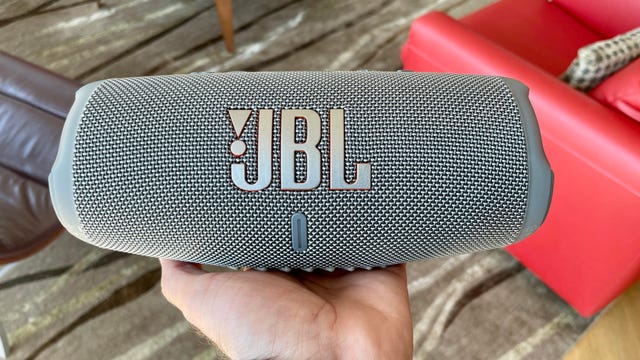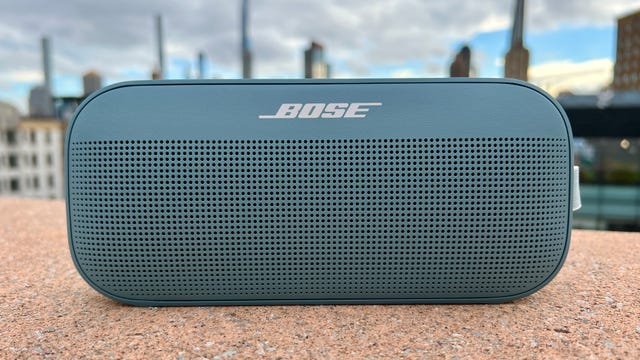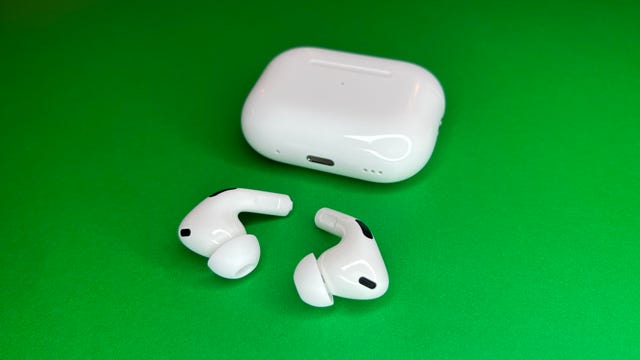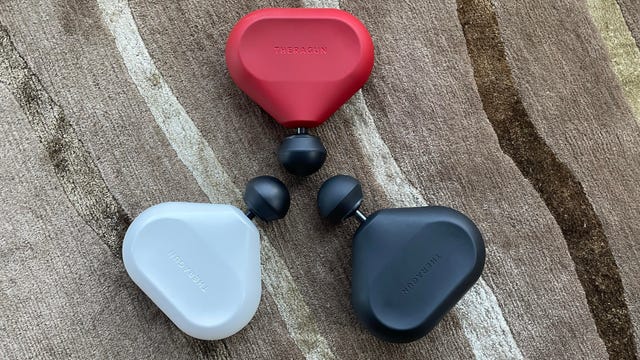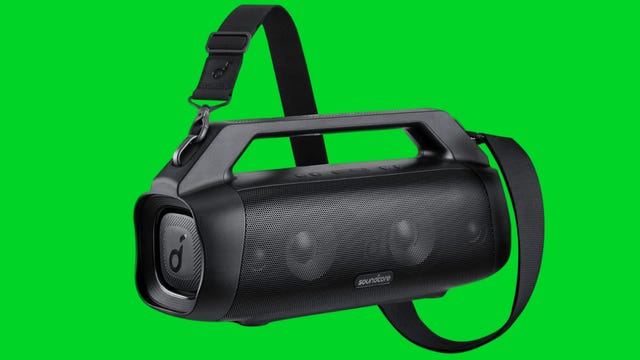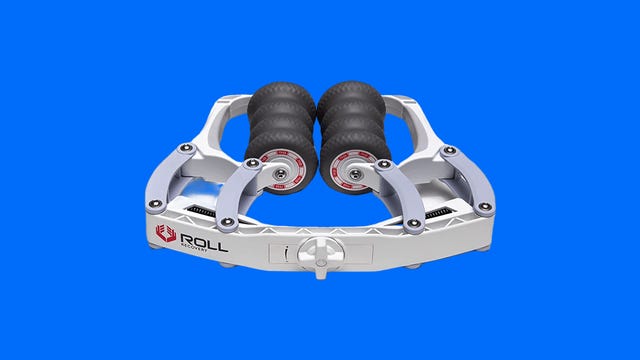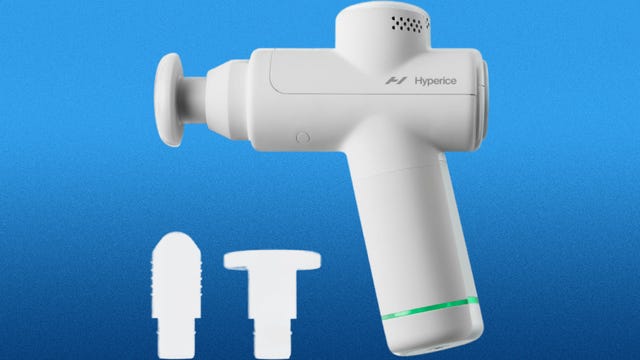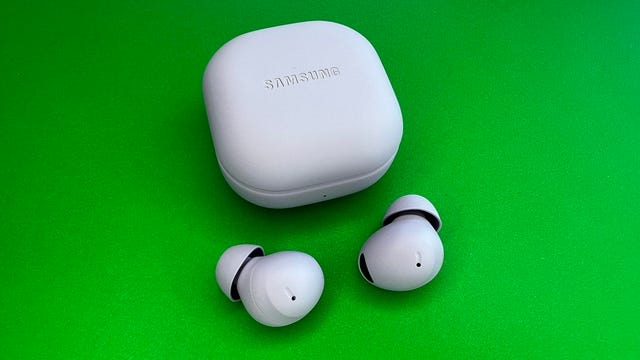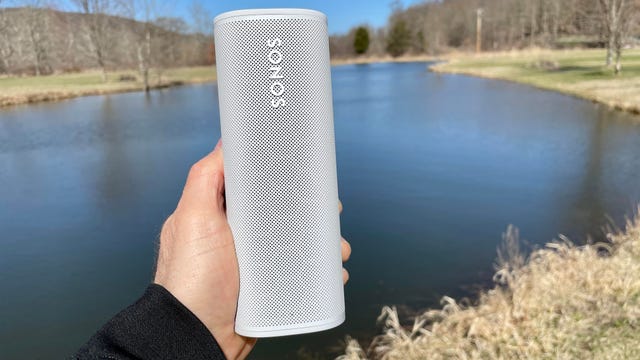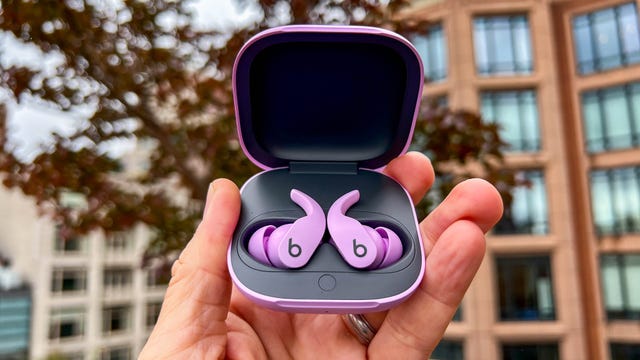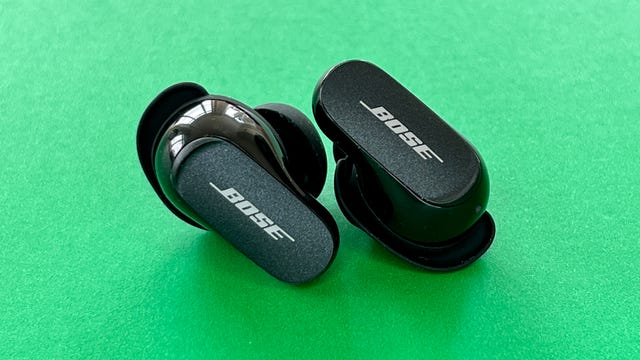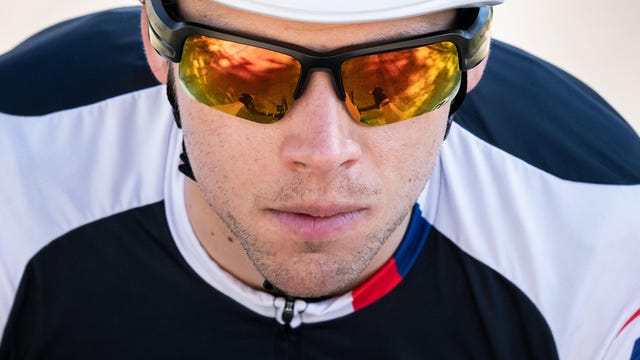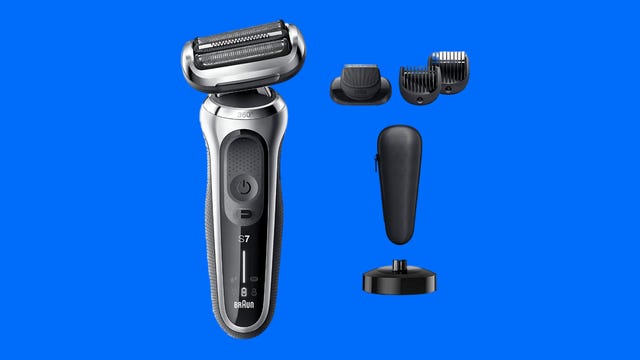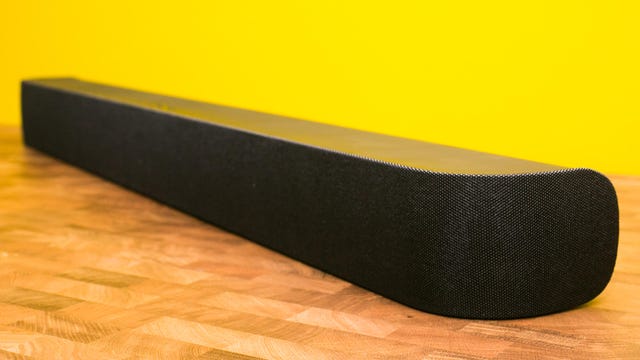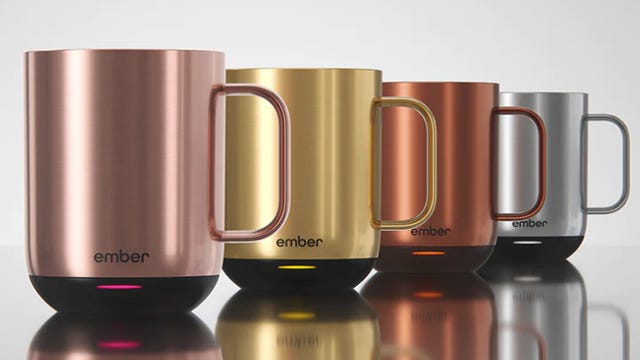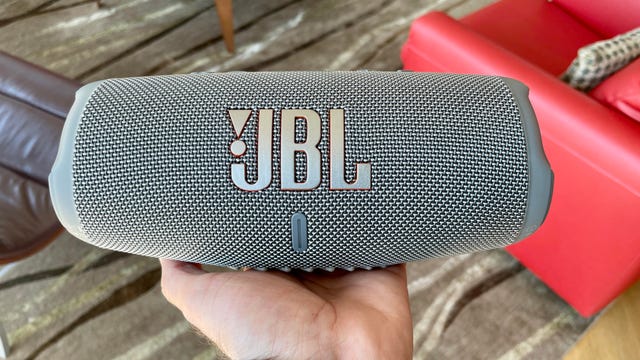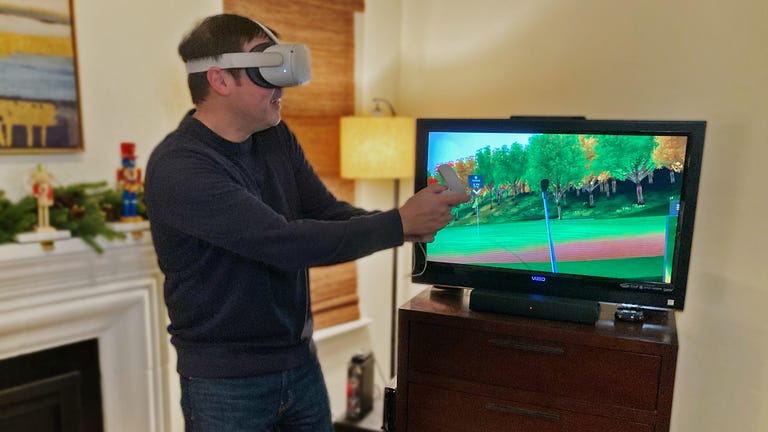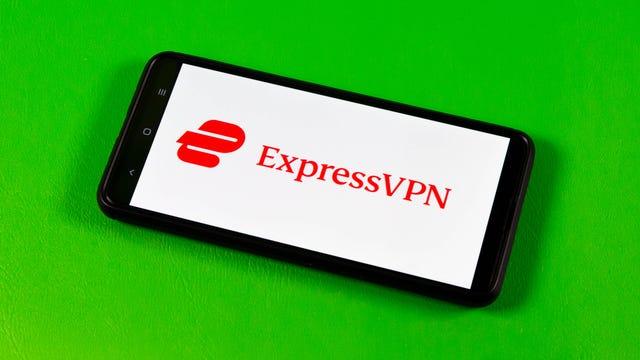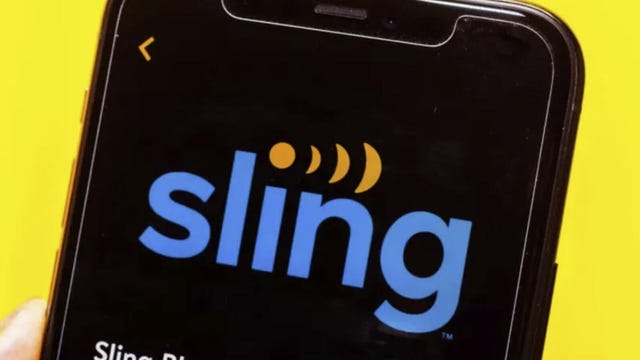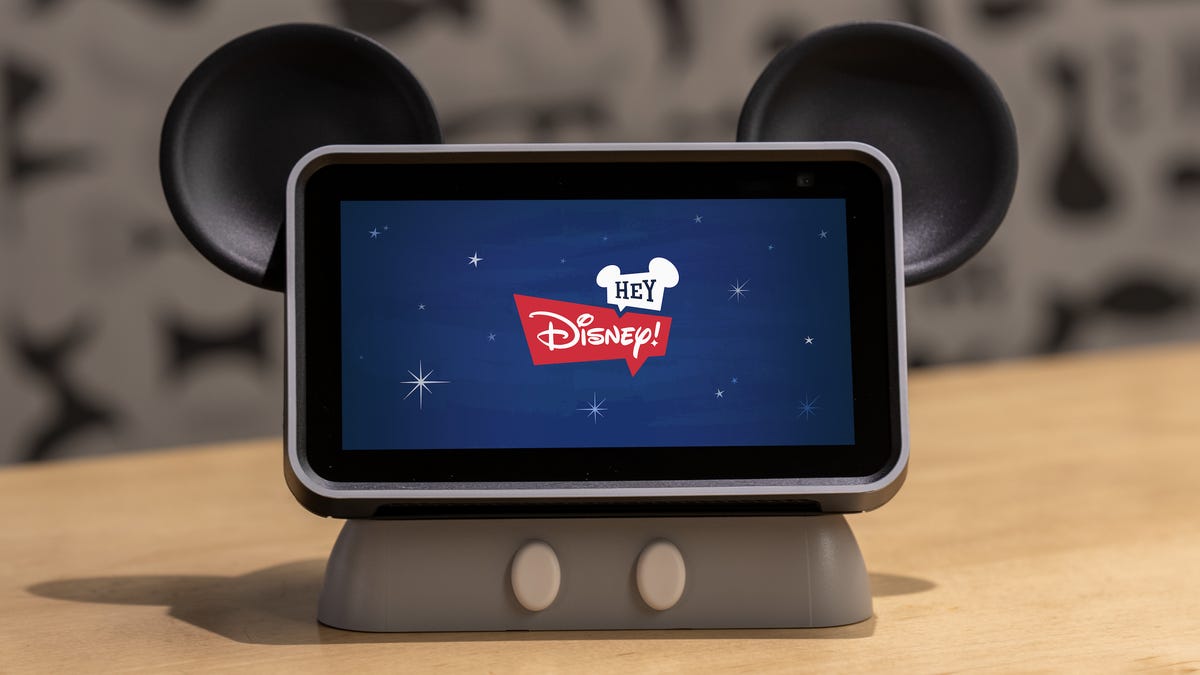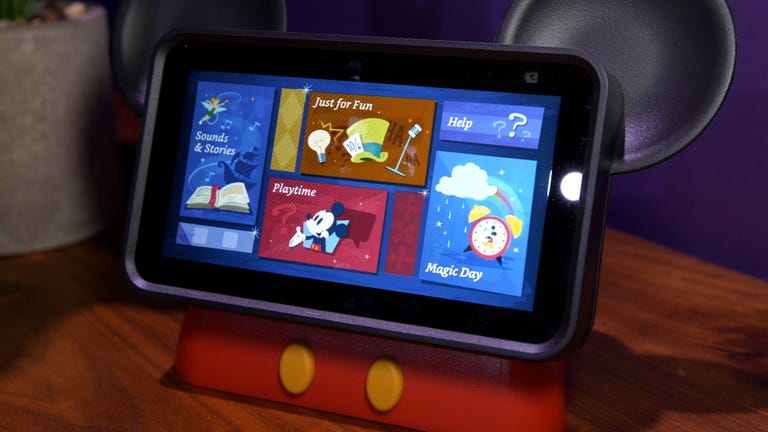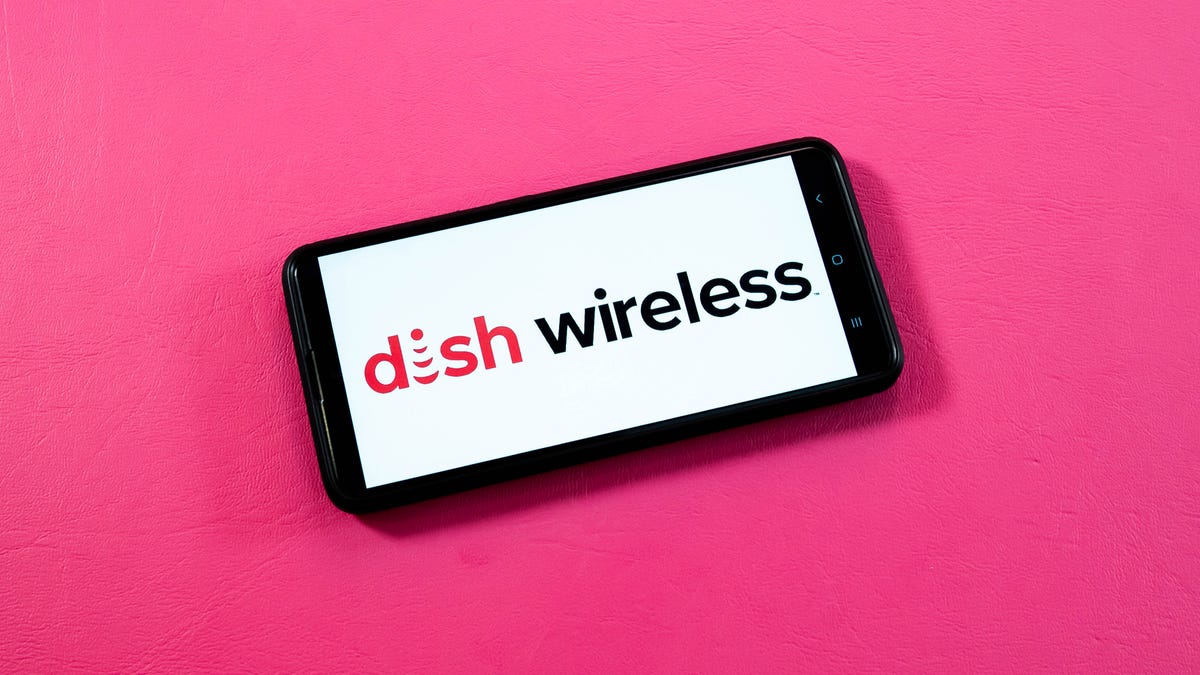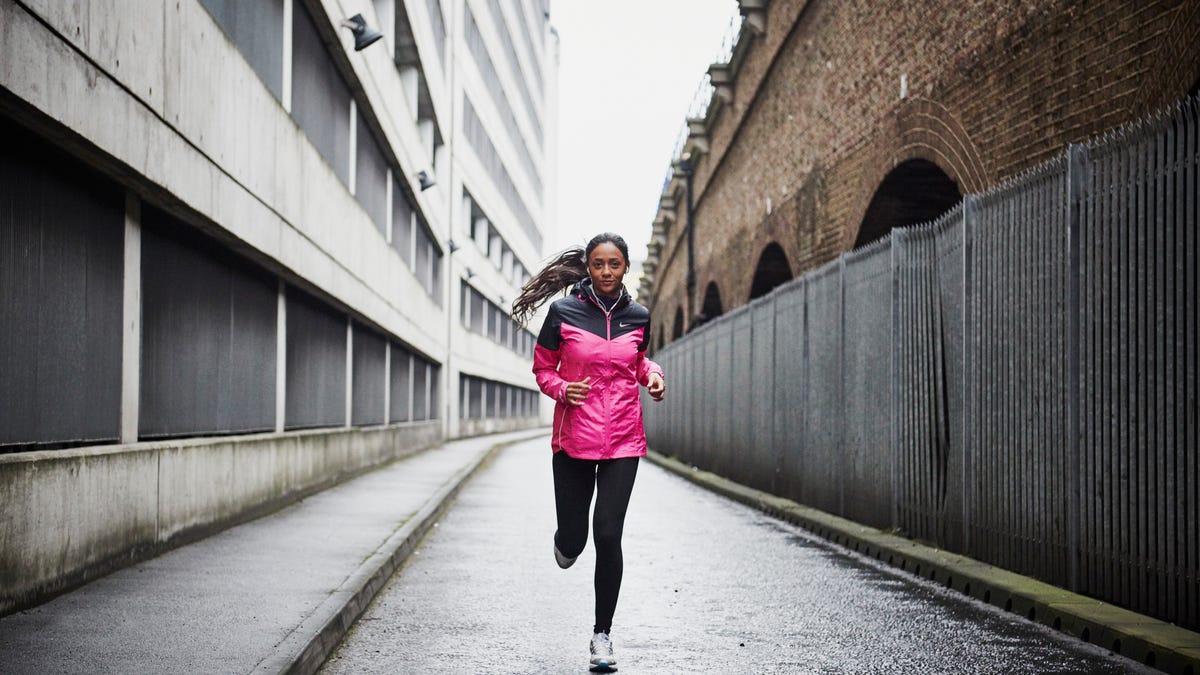When it comes to gift-giving, you don’t always have to spend hundreds of dollars to find something amazing. However, there are times you just want to splurge on the special people in your world. And increasing your budget opens up a whole world of wonderful and thoughtful gifts. To help you find that perfect present for your friend, partner or family member, we’ve tested out and rounded up some of our favorite gifts that you can pick up for $300 or less right now below.
You’ve got lots of options in this price range, where you’ll start to see more premium-grade products. From massagers and headphones to trainers and speakers, here are gifts under $300 that are perfect for Mom, Dad and other loved ones for a special occasion.
When it launched, Bose made some bold claims about its new SoundLink Flex Bluetooth speaker, particularly its bass performance. But it mostly lives up to the hype and arguably is the best-sounding wireless speaker for its compact size. Available in three color options — black, white smoke and stone blue (pictured) — it’s equipped with Bose’s PositionIQ technology to automatically detect the speaker’s orientation and deliver optimized sound based on whether upright, hanging or flat on its back. Read our Bose SoundLink Flex review.
The AirPods Pro (2nd generation) are powered by Apple’s new H2 chip, which delivers more processing power while being more energy efficient, according to Apple. The new chip, combined with new low-distortion drivers, allows for improved sound that offers better clarity and depth. The noise canceling is also improved — Apple says the new AirPods have “double” the noise canceling of the original AirPods Pro. Additionally, the new AirPods add an extra hour of battery life, up from five to six hours with noise canceling on. Plus, a speaker in the case that emits a sound that helps locate your buds via Find My should they decide to hide from you.
First released in 2020, the 1.5-pound Theragun Mini massager is designed to be portable, easily fitting in a backpack or purse. While it doesn’t have quite the power of one of Theragun’s full-size devices, it’s surprisingly powerful considering how small it is. I’ve tried larger massage guns in this price range, and it’s just as powerful but half the size. The rechargeable battery is rated to last two-and-a-half hours, and a neoprene protective case is included.
Solo Stove fire pits are among the best smokeless fire pits out there, and while they work great and their stainless steel construction gives them a sleek appearance, the original models had one flaw: They weren’t so easy to clean up. However, that changed with the arrival of the new Solo Stove 2.0 fire pits, which are available in the same three sizes — Ranger 2.0 (small), Bonfire 2.0 (medium) and Yukon 2.0 (large) — and have a removable ash pan, a feature missing from the 1.0 models.
Anker’s original Soundcore Motion Boom speaker is still a decent value at around $150 (you can save $30 by activating the instant coupon on the product page at Amazon). But the new-for-2022 Motion Boom Plus is significantly improved, particularly in terms of sound quality. It’s easily one of the best new Bluetooth speakers of 2022.
Weighing 5.29 pounds (almost a pound more than the Motion Boom), it uses Bluetooth 5.3 and is equipped with upgraded dual 3.5-inch woofers and newly added dual 1-inch tweeters, delivering up to 80 watts of audio output (60W for the woofers and 20W for the tweeters). Battery life is rated for 20 hours at moderate volume levels. It’s also IP67 waterproof and dust-proof and floats if you happen to drop it in a body of water.
Over the last few years, foam rollers and massage guns have been popular recovery products after workouts, as well as important tools for stretching and warming your muscles pre-workout. The original Roll Recovery R8 and newer R8 Plus are kind of a combo between a roller and an unpowered massager.
The key addition to the R8 Plus is a dial that allows you to adjust the amount of tension in the device to more or less intense levels. You clamp it onto various body parts, with instructional videos showing you how to hit certain areas like calves, hamstrings, IT bands, and arms. The R8 Plus is available in white, red, or black.

Ecco Street Lite retro men’s sneakers
The Ecco Street Lite retro sneaker is one of those shoes that guys can not only wear in more casual situations but also works with a little more formal attire. They come in the white leather version shown here (with various trim colors), plus some colored suede options.
Note that these tend to run large, so consider getting a size smaller than you usually do.
It’s still difficult to get a PS5 or Xbox Series X, but the stepdown Xbox Series S is in stock at retailers with comparative frequency. Yes, there are caveats: There’s no optical disc drive, the resolution is less than true 4K and it only has half the storage as its big brother. But it plays all of the same games, including Halo Infinite. It’s a great choice for a lot of gamers.
If you want the latest and greatest Apple Watch, you should get the Watch Series 8 or the top-end Watch Ultra, but the SE remains arguably the best value when it comes to Apple smartwatches. You can also get it with LTE cellular service.
While it doesn’t have some of the extra features of the Apple Watch 8, the latest second-gen Watch SE offers good performance for those who don’t want to spend that much on an Apple Watch.
We named the original Hypervolt Go one of the best travel massage guns and the upgraded Hypervolt Go 2 offers some small but notable improvements.
The new features in the Hypervolt Go 2 include LED speed sensors, back button control and a battery-level LED band. The look has also changed. While the original Hypervolt Go is all black, the Go 2 now has an arctic-gray finish. The Hypervolt Go 2 also has improved the air flow and ventilation of the percussion gun. It remains lightweight, weighing in at 1.5 pounds, and has three speed settings along with Hyperice’s patented QuietGlide technology which makes the massage gun nearly silent. Like the Go, it comes with two head attachments (flat and bullet).
The Galaxy Buds 2 Pro offer improved noise canceling along with good sound and voice-calling performance, plus support for high-resolution wireless audio streaming if you’re a Galaxy device owner with the right setup. That said, their biggest upgrade may be their new design and smaller size, which make them a better fit for more ears. Aside from their somewhat high price tag, their only drawback is that some of their key features only work with Samsung Galaxy devices.
Available in white or black, the Roam is currently Sonos’ smallest and most affordable speaker (if you don’t count those $99 Sonos-compatible Ikea Symfonisk Wi-Fi bookshelf speakers). For its size, it sounds impressive and is equipped with both Bluetooth and Wi-Fi. Even if Dad doesn’t have a Sonos system already, this is a good starter speaker and he can use his own money to add more Sonos gear in the future. Read our Sonos Roam review.
Technically, the Beats Fit Pro aren’t AirPods, but they’re built on the same tech platform as the AirPods Pro. Unlike Beats’ earlier and less expensive Studio Buds, the Beats Fit Pro include Apple’s H1 chip and have most of the original AirPods Pro’s features, including active noise canceling, spatial audio and Adaptive EQ. I’d venture to call them the sports AirPods you’ve always wanted. And for some people, they might just be better than the AirPods Pro.
Bose’s second-generation QuietComfort Earbuds 2 are not only about 30% smaller than their predecessors, but their case is about 40% smaller and truly pocketable. They feature best-in-class noise canceling and improved sound, thanks to Bose’s new CustomTune sound calibration system that customizes the sound for your ears. Voice-calling performance is also significantly better than that of the original QuietComfort Earbuds.
The other big change is to the ear tips. Bose has ditched its one-piece StayEar wing tips for a two-piece Fit Kit system that features separate ear tips and “stability bands” in three size options, giving you more flexibility to get a secure fit and tight seal.
If you’re looking for the best-sounding pair of audio glasses with the best overall performance — that includes call quality and battery life — the Bose Frames Tempo are the one to get. It’s ostensibly a sports model designed for runners and bikers, and while it’s a little bulky, it stays on your head securely.
The Tempo offers slightly better sound and battery life than the more traditional-looking Tenor, which is a good choice for a more everyday set of audio sunglasses. The Tempo has better specs all-around, with USB-C charging and larger 22mm drivers. It also delivers up to eight hours of battery life.
Their sound is definitely improved from the original Frames. Bose says the Tempo plays “deeper and louder — loud enough for cycling at 25 mph — while still able to hear traffic and your training partners.” They’re sweat-, weather-, scratch- and shatter-resistant, according to Bose and fit under most protective helmets. (I had no problem using them with a couple of bike helmets.) They also work well for making calls, thanks to a new dual-microphone system. Optional lenses are available for $39 and you can order prescription lenses through Lensabl.
Most guys secretly want an electric razor even if they’ve never used one. While the Braun Series 7 isn’t the top-of-the-line Braun — the Series 9 is — it’s a good value at around $145 for the base kit. It can be used dry or wet — it’s fully waterproof — and comes with beard trimmers, a cleaning dock, and a carrying case. Battery life is rated at up to 50 minutes on a full charge and a quick five-minute charge will get you enough juice for a shave.
With a full-fledged 4K HDR Roku streamer built in and a single voice remote controlling everything, this bar makes a thoughtful gift and offers a simple all-in-one audio-video system. Setup is a breeze: Plug it into a TV with a simple HDMI connection. Sound quality is very good for a single bar, and you can add Roku’s optional wireless subwoofer for more punch. It also comes with the much-loved Roku remote control. (This model is basically just the Smart Soundbar with an upgraded voice remote.)
Ember’s temperature-controlled smart mugs have been going up in price over the last couple of years — most likely due to supply chain issues — but they now come in more color options, including some new eye-catching metallic colors that cost $30 more than standard black, white or blue mugs.
Ember makes 6-ounce ($100), 10-ounce ($130) and 14-ounce ($150) size of its smart mug that keeps your hot beverage of choice hot while you sip it over a longer drinking session. While it won’t keep your coffee or tea warm for hours, the idea is that you can select your ideal temp via the companion Ember app for iOS or Android and keep your beverage at a high temp during the 30 minutes or so it takes to casually drink it.
I personally prefer the larger 14-ounce version, though it does cost more. A good insulated mug with a top on it will also keep your beverage hot (and they are cheaper), but this Ember mug allows you to drink a cup of joe like you normally would and not sip it through a small hole in the top.
Available in multiple color options, the latest version of JBL’s Charge Bluetooth Speaker delivers improved sound with more bass. It’s bigger than your average portable Bluetooth speaker, but it’s got some good kick to it and like previous Charge speakers, it has a USB out port that allows you to charge a device like a smartphone. Battery life is rated at up to 20 hours at moderate volume levels. It’s fully waterproof and dust-proof.
More gift ideas
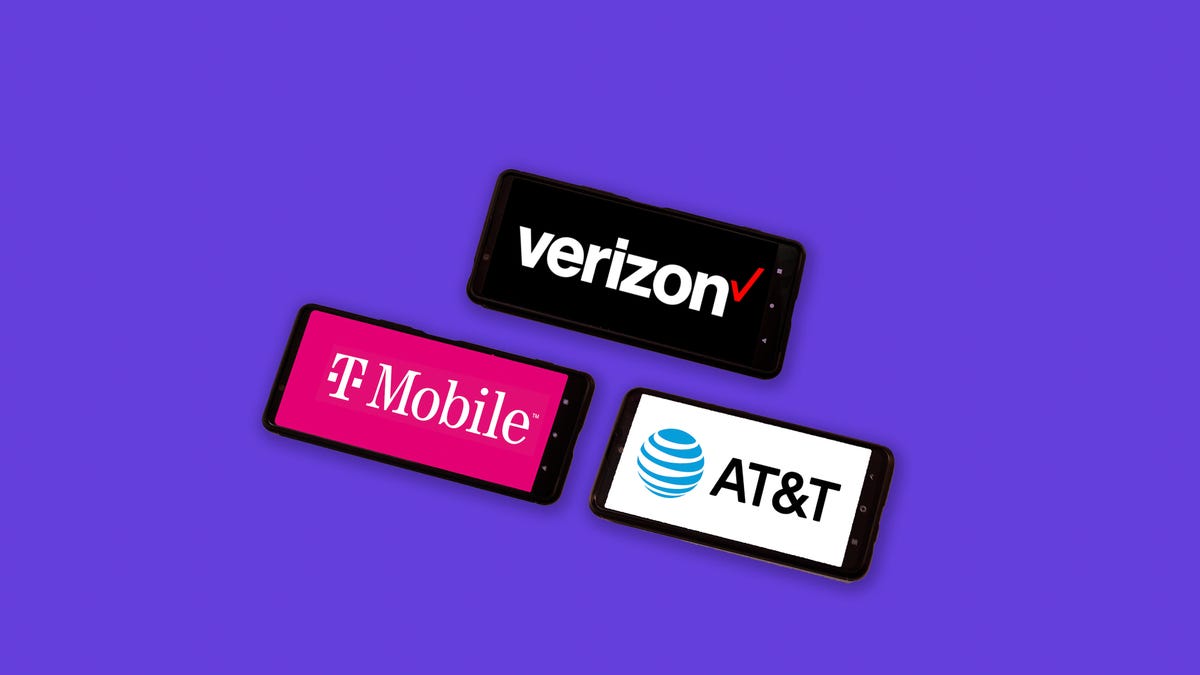
Verizon, T-Mobile, AT&T: A Look At Which Carrier Has the Fastest Speeds at Theme Parks
The biggest theme parks in the US have access to mobile speeds that are more than 50% faster than average speeds, an Opensignal report said Thursday.
Clocking the speeds of mobile devices in the most-visited theme parks across the country, mobile analytics company Opensignal said upload speeds are also “substantially faster.”
“Faster than the national average download speeds around theme parks are an impressive achievement when taking into consideration how many guests visit them, which is likely to lead to network congestion,” the report said.
While the parks offer Wi-Fi, Opensignal found users are spending less than 20% of their time actually connected to it.
So, which carriers offer the best experience in the most popular theme parks? Check out the stats from Opensignal below.
Read more: Switching Phone Carriers in 2023: What to Know Before Changing Providers
Disneyland Resort, California: Best carrier experience
This includes both Disneyland and Disney’s California Adventure.
- Download speeds: T-Mobile 108Mbps, AT&T 57Mbps, Verizon 48Mbps
- Upload speeds: T-Mobile 16.4Mbps, AT&T 15.7Mbps, Verizon 11Mbps
- Consistent quality: T-Mobile 85%, AT&T 81%, Verizon 79%
- 5G availability: T-Mobile 66%, AT&T 47%, Verizon 19%
Walt Disney World, Florida: Best carrier experience
This includes the Magic Kingdom, Epcot, Animal Kingdom and Hollywood Studios.
- Download speeds: T-Mobile 126Mbps, Verizon 67.8Mbps, AT&T 67.1Mbps
- Upload speeds: Verizon 17Mbps, AT&T 15Mbps, T-Mobile 14Mbps
- Consistent quality: AT&T 85%, Verizon 84%, T-Mobile 83%
- 5G availability: T-Mobile 51%, AT&T 49%, Verizon 18%
Universal Orlando, Florida: Best carrier experience
This includes both Universal Studios Orlando and Universal’s Islands of Adventure.
- Download speeds: T-Mobile 73Mbps, AT&T 60Mbps, Verizon 44Mbps
- Upload speeds: AT&T 13Mbps, T-Mobile 12Mbps, Verizon 11.5Mbps
- Consistent quality: T-Mobile 78%, AT&T 77%, Verizon 75%
- 5G availability: AT&T 46%, T-Mobile 35%, Verizon 10%
Best theme park connections overall
Beating out the Disney parks was Busch Gardens in Tampa Bay, Florida, which has the best upload and download speeds on average.
Here are the top five US theme parks with the fastest average download speeds:
- Busch Gardens Tampa Bay, Florida: 102Mbps
- Knott’s Berry Farm, California: 89Mbps
- Walt Disney World, Florida: 85Mbps
- SeaWorld, San Diego: 72.4Mbps
- Universal Studios Hollywood, California: 72.3Mbps
Here are the top five theme parks with the fastest average upload speeds:
- Busch Gardens Tampa Bay, Florida: 21Mbps
- Universal Studios Hollywood, California: 18Mbps
- SeaWorld Orlando, Florida: 16Mbps
- Walt Disney World, Florida: 15Mbps
- Disneyland Resort, California: 14Mbps
Verizon, AT&T and T-Mobile didn’t immediately respond to a request for comment.
For more on carriers, check out CNET’s list on the best mobile phone plans, the best unlimited data mobile plans and the best phones to buy in 2023.

Best Games on PS Plus: Far Cry 6, TMNT, Inscryption and Much More Coming in June
June is a huge month for PlayStation Plus subscribers. A combination of big-name games and indie darlings lead the charge for new games coming to the service.
Far Cry 6 is the latest game in the first-person shooter franchise, featuring Breaking Bad’s Giancarlo Esposito as the dictator of a fictional Caribbean island called Yara. Retro brawler Teenage Mutant Ninja Turtles: Shredder’s Revenge, indie card game Inscryption and rogue-like platformer Rogue Legacy 2 are some of the other quality titles heading to PS Plus on June 20.
Sony also confirmed in a blog post Wednesday that it’s testing cloud streaming support for PS5 games, allowing PS Plus subscribers to jump directly into a game instead of having to download it.
Read more: Best Game Subscription Services
Here are some notable PlayStation Plus inclusions so far:
- Horizon: Forbidden West
- Ratchet & Clank: Rift Apart
- Resident Evil 7
- Dishonored 2
- Watch Dogs: Legion
- Tekken 7
- Stray
- Kingdom Hearts HD 1.5 + 2.5 ReMIX
- Deathloop
- Final Fantasy 7 Remake, and FFVII Intergrade
- Ghost of Tsushima: Director’s Cut
- Untitled Goose Game
- Marvel’s Guardians of the Galaxy
- Death Stranding: Director’s Cut
- Returnal
- Assassin’s Creed: Valhalla (and now Black Flag and several others)
- Spider-Man: Miles Morales
- God of War (2018)
- Fallout 76
There are some notable games on that list, but it also lacks the blockbuster Day 1 vibe of Xbox Game Pass, which has big debuts like Halo Infinite and the upcoming Starfield. Extra costs $15 a month, $40 for three months or $100 for a year. (In the UK it’s 11, 32 or 84, respectively, and in Australia it’s AU$19, AU$55 or AU$135.)
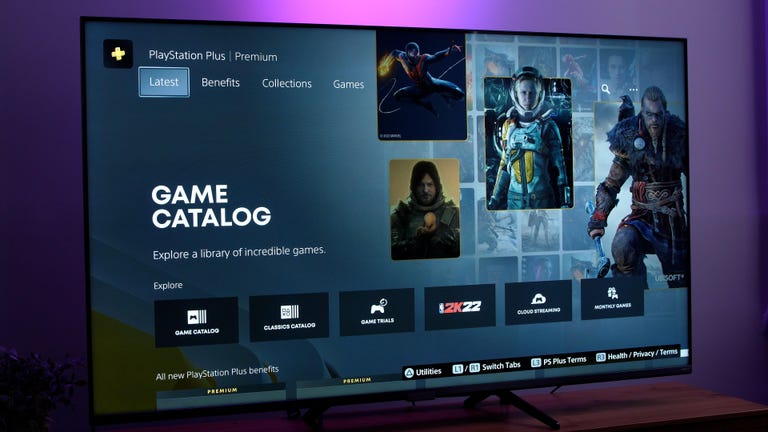
10:39
The more expensive Premium tier ($18 or 13.49 a month) also includes download and streaming access to about 500 older games, mostly from pre-PS4 consoles, most of which will run at 60 frames per second. It also includes access to game demos. You can try games like Horizon: Forbidden West, Tiny Tina’s Wonderlands and Hot Wheels Unleashed. (Note: In Australia the Premium tier is called Deluxe and costs AU$22 a month.)
One of the better aspects of the new PS Plus is there are plenty of cult and indie favorites in the Extra/Premium tier.
Here are some older or lesser-known picks so far:
- Disaster Report 4: Summer Memories
- XCOM 2
- Uncharted: The Lost Legacy
- Pathfinder: Kingmaker
- Pillars of Eternity II
- South Park: The Stick of Truth
- Tetris Effect
- Outer Wilds
I’ll update this list as more games are added, and as my colleagues remind me of top-tier classics I’ve missed.
Read more: PlayStation Plus vs. PlayStation Now
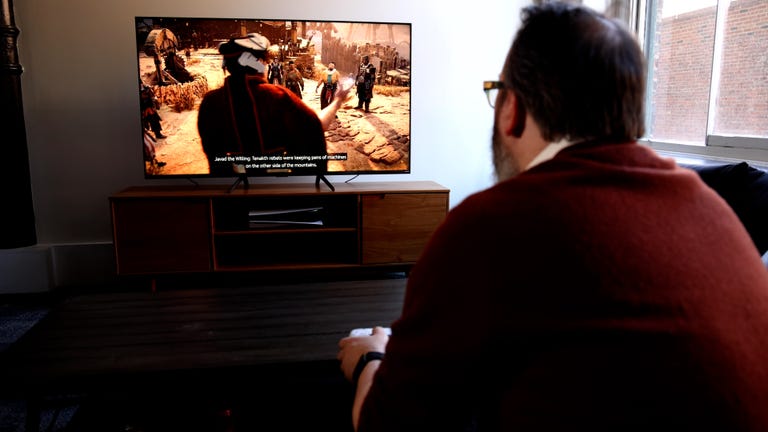
05:08
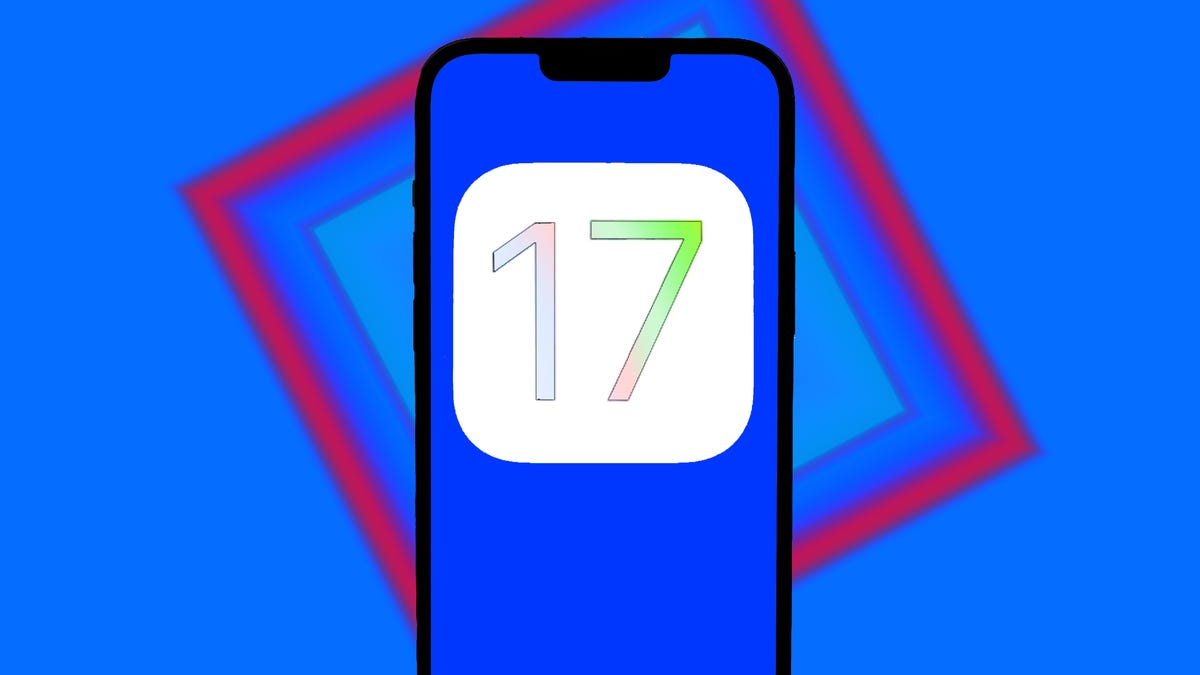
Will Your iPhone Work With iOS 17? Here’s How to Find Out
At the Apple WWDC event on June 5, the company announced many of the new features planned for iOS 17, its next version of the iPhone operating system. Apple will be adding a new Standby mode, a Journal app and a major update to Messages.
However, not all iPhone users will be able to use iOS 17. As with all of the major Apple software updates, some older iPhone models are getting left behind, including the iPhone X from 2017.
Read more: Don’t Install the iOS 17 Developer Beta on Your iPhone
If you’re not sure which iPhone you’ve got, a quick check in your settings can show you. Open your Settings app and tap General > About. Next to Model Name, you’ll see which iPhone you have.
We’ll tell you how to find out whether your iPhone will be compatible with iOS 17. If you’d like to try out the iOS 17 beta, the public beta will be available in July. Also, check out our list of best iPhones to discover if there’s a newer model that might work for you.
More from WWDC 2023
iPhones that are compatible with iOS 17
If you’ve got one of these iPhones, you’ll have access to iOS 17 when it’s available this year, Apple said.
- iPhone XS
- iPhone XS Max
- iPhone XR
- iPhone 11
- iPhone 11 Pro
- iPhone 11 Pro Max
- iPhone 12
- iPhone 12 Mini
- iPhone 12 Pro
- iPhone 12 Pro Max
- iPhone 13
- iPhone 13 Mini
- iPhone 13 Pro
- iPhone 13 Pro Max
- iPhone SE (second generation and later)
- iPhone 14 (including Plus)
- iPhone 14 Pro
What if your iPhone isn’t on the compatibility list?
If your iPhone isn’t listed above, it won’t support iOS 17 and you won’t get a notification to download the newest software. For instance, if you have an iPhone X or older, the latest software you’ll ever be able to use on that phone is iOS 16.
For more about WWDC, check out the new 15-inch MacBook Air and Vision Pro. Also, new features are coming to WatchOS this year.
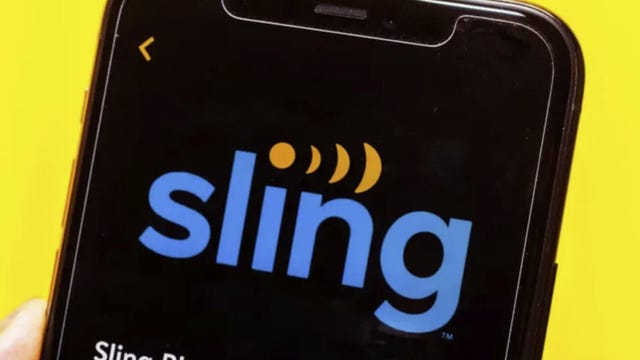
Watch UEFA Nations League Soccer: Livestream Spain vs. Italy From Anywhere
European big guns Spain and Italy face off in this intriguing Nations League semifinal, with a showdown against Croatia in Sunday’s final awaiting the winner.
Spain have reached the last-four stage of UEFA’s secondary international competition after winning Group A2, which included Portugal, Switzerland and the Czech Republic, with this match only the third game in charge for new boss Luis de la Fuente.
Roberto Mancini’s Azzurri have reached the semifinals after finishing top of a tricky Group A3 that included Hungary, Germany and England. Having missed out on qualification for last year’s World Cup in Qatar, Italy will be determined to make amends by winning this tournament.
The two teams come into this clash with indifferent recent form, having both recorded a win and a loss during the March international window.
Below, we’ll outline the best live TV streaming services to use to watch the game live wherever you are in the world.

Spain vs. Italy: When and where?
Spain play Italy at the De Grolsch VesteStadium in Enschede, Netherlands, on Thursday, June 15. Kickoff is set for 8:45 p.m. CET local time in the Netherlands (7.45 p.m. BST in the UK; 2.45 p.m. ET or 11.45 a.m. PT in the US; and 4.45 a.m. AEST on Friday, June 16 in Australia). The final is this Sunday, June 18.
How to watch the Spain vs. Italy game online from anywhere using a VPN
If you find yourself unable to view the game locally, you may need a different way to watch the game — that’s where using a VPN can come in handy. A VPN is also the best way to stop your ISP from throttling your speeds on game day by encrypting your traffic, and it’s also a great idea if you’re traveling and find yourself connected to a Wi-Fi network, and you want to add an extra layer of privacy for your devices and logins.
With a VPN, you’re able to virtually change your location on your phone, tablet or laptop to get access to the game. So if your internet provider or mobile carrier has stuck you with an IP address that incorrectly shows your location in a blackout zone, a VPN can correct that problem by giving you an IP address in your correct, nonblackout area. Most VPNs, like our Editors’ Choice, ExpressVPN, make it really easy to do this.
Using a VPN to watch or stream sports is legal in any country where VPNs are legal, including the US, UK and Canada, as long as you have a legitimate subscription to the service you’re streaming. You should be sure your VPN is set up correctly to prevent leaks: Even where VPNs are legal, the streaming service may terminate the account of anyone it deems to be circumventing correctly applied blackout restrictions.
Looking for other options? Be sure to check out some of the other great VPN deals taking place right now.
ExpressVPN is our current best VPN pick for people who want a reliable and safe VPN, and it works on a variety of devices. It’s normally $13 per month, and you can sign up for ExpressVPN and save 49% plus get three months of access for free — the equivalent of $6.67 per month — if you get an annual subscription.
Note that ExpressVPN offers a 30-day money-back guarantee.
Livestream the Spain vs. Italy game in the US
Thursday’s big match at the De Grolsch Veste Stadium will be available to stream on Fox Sports 1, which has live broadcast rights in the US for the remaining UEFA Nations League fixtures for this season.
Among the live TV streaming services that carry local Fox Sports 1, the cheapest is Sling TV Blue at $40 per month.
Numerous other live TV streaming services carry local Fox stations as well, namely YouTube TV, Hulu Plus Live TV, DirecTV Stream and FuboTV. They all cost more than Sling TV, but they also carry more channels. Check out our live TV streaming channel guide for details.
Livestream the Spain vs. Italy game in the UK
UEFA Nations League rights in the UK are with Viaplay. This game will be broadcast on Viaplay Sports 1, with kick-off set for 7.45 p.m. BST on Thursday evening.
You’ll need to be a subscriber to Viaplay’s Total package to watch its UEFA Nations League Finals coverage, which is priced at 15 per month or 144 per year.
Viaplay currently has the UK broadcast rights to the United Rugby Championship, La Liga soccer, plus the IIHF Ice Hockey World Championship and Champions Hockey League.
Livestream the Spain vs. Italy game in Canada
If you want to stream this game live in Canada, you’ll need to subscribe to DAZN Canada. The service has exclusive broadcast rights to every remaining Nations League game this season.
A DAZN subscription currently costs CA$25 a month or CA$200 a year and will also give you access to a wide range of soccer, plus Six Nations rugby and WTA tennis.
As well as dedicated apps for iOS and Android, there’s a wide range of support for set-top boxes and smart TVs.
Livestream the Spain vs. Italy game in Australia
Football fans Down Under can watch this match on streaming service Optus Sport, which is showing every single UEFA Nations League game live in Australia this season.
With exclusive rights to screen all remaining Nations League matches live this season, as well as Premier League, Women’s Super League and LaLiga games, streaming service Optus Sport is a particularly big draw for Aussie soccer fans.
If you’re already an Optus network customer you can bag Optus Sport for a reduced price, with discounts bringing the price down to as low as AU$7 per month. If you’re not, a standalone monthly subscription to the service starts at AU$25.
Quick tips for streaming the UEFA Nations League using a VPN
- With four variables at play — your ISP, browser, video streaming provider and VPN — your experience and success when streaming Nations League matches may vary.
- If you don’t see your desired location as a default option for ExpressVPN, try using the “search for city or country” option.
- If you’re having trouble getting the game after you’ve turned on your VPN and set it to the correct viewing area, there are two things you can try for a quick fix. First, log into your streaming service subscription account and make sure the address registered for the account is an address in the correct viewing area. If not, you may need to change the physical address on file with your account. Second, some smart TVs — like Roku — don’t have VPN apps you can install directly on the device itself. Instead, you’ll have to install the VPN on your router or the mobile hotspot you’re using (like your phone) so that any device on its Wi-Fi network now appears in the correct viewing location.
- All of the VPN providers we recommend have helpful instructions on their main site for quickly installing the VPN on your router. In some cases with smart TV services, after you install a cable network’s sports app, you’ll be asked to verify a numeric code or click a link sent to your email address on file for your smart TV. This is where having a VPN on your router will also help, since both devices will appear to be in the correct location.
- And remember, browsers can often give away a location despite using a VPN, so be sure you’re using a privacy-first browser to log into your services. We normally recommend Brave.
